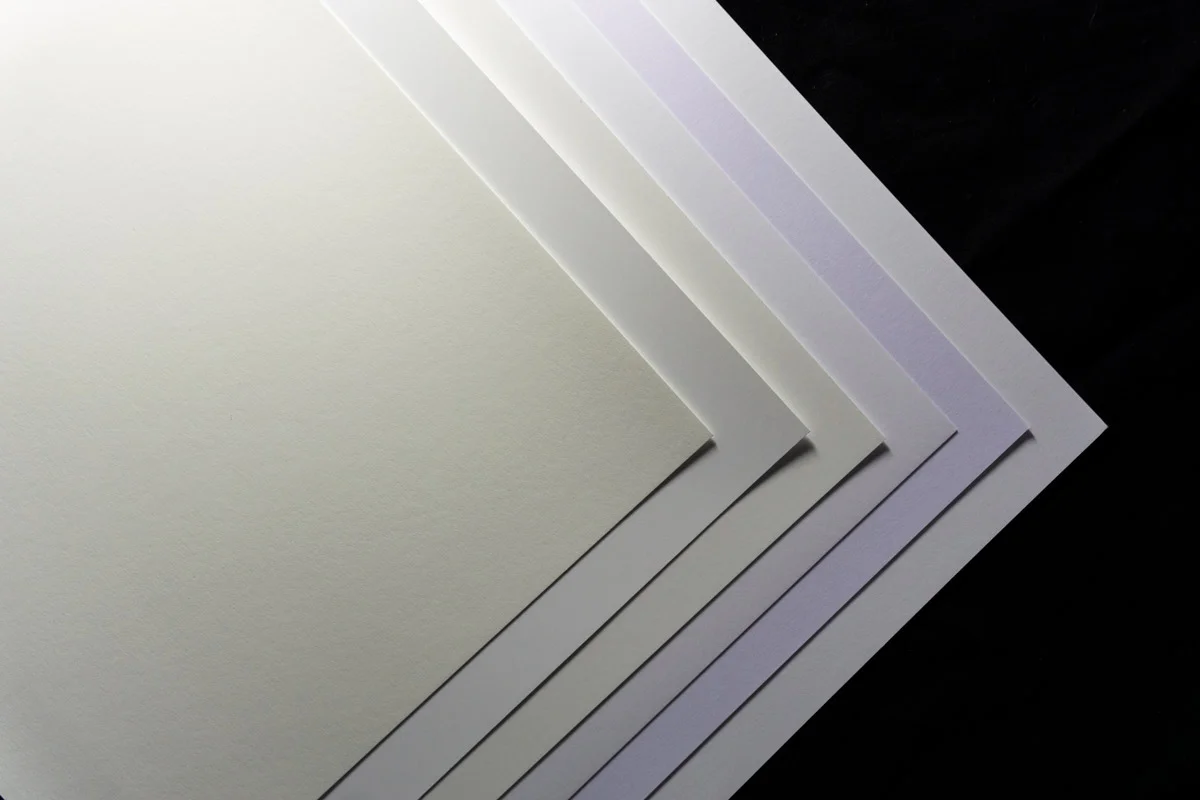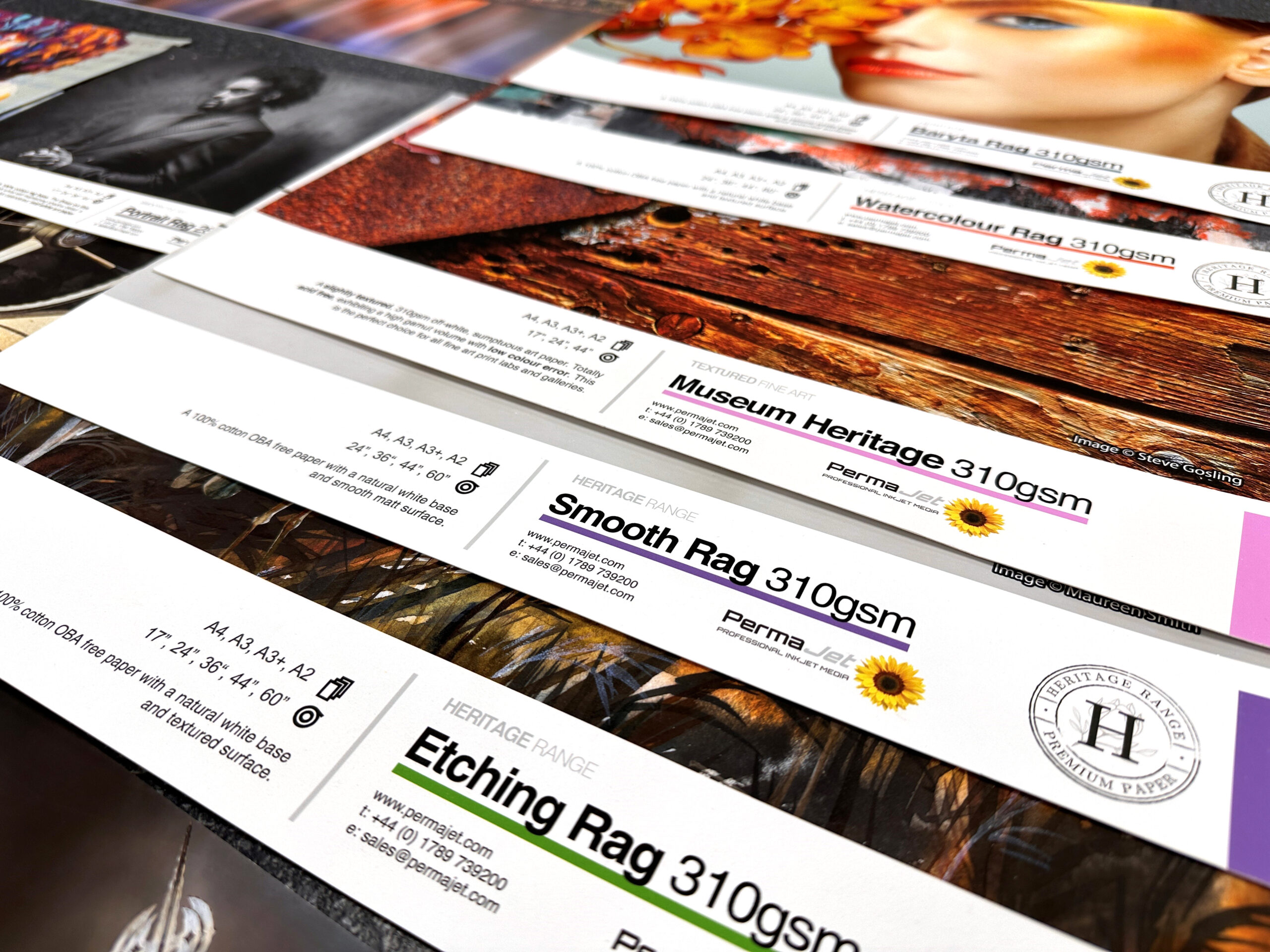Choosing the right fine art paper starts with understanding the key differences between alpha cellulose and cotton rag papers. These two materials dominate the production of high-quality fine art papers, each bringing unique qualities that affect the appearance, texture, and durability of your prints. Knowing how they compare can help you select the perfect paper to showcase your work.
In this blog, we’ll break down the key differences to help you decide which best suits your needs – especially if you’re considering trusted brands like PermaJet, known for their high-quality fine art media.
What is Alpha Cellulose Paper?
Alpha cellulose paper is composed of 100% wood pulp fibres. Manufacturers refine it to remove impurities like lignin (which can cause yellowing over time), creating an acid-free, archival-quality paper base. This process creates a durable, archival-quality paper similar to cotton, but often more affordable.
Alpha cellulose papers typically come in smooth, baryta, or textured surfaces that mimic traditional watercolor paper.
Alpha cellulose papers are often combined with a baryta layer to replicate traditional fibre-based papers. These can be found in PermaJet’s FB Baryta range. These are a great way of replicating that darkroom quality achieved with papers such as Ilford MGFB Classic, but with modern inkjet printing.
Alpha cellulose paper is widely used for inkjet printing, a popular choice for photos, fine art, and portfolios. It offers a balanced combination of quality and affordability. Brands like PermaJet provide a variety of alpha cellulose papers that deliver excellent colour vibrancy, fine detail reproduction, and reliable performance. This makes them a go-to for creatives who want gallery-worthy results without the higher costs of cotton rag.

What is Cotton Rag Paper?
Cotton rag paper is a premium-grade paper made primarily from cotton linters or recycled cotton rags, rather than wood pulp. Because cotton fibres are more resilient than wood-based fibres, cotton rag paper stands out for its exceptional longevity and strength. Its composition means this paper is inherently acid-free and archival.
Cotton rag papers offer a key advantage: manufacturers can produce varied base tints and a wide range of textures. Often made using mould-made or handmade techniques, these papers have a natural, textured finish that enhances their aesthetic appeal. The result is a luxurious, museum-grade paper prized for its softness, strength, and excellent ink absorption.
Cotton rag papers lend themselves to image creators who are wanting to replicate traditional artwork such as watercolour paints, charcoal or pastels. This is due to the wide variety of surface textures available.
Like alpha cellulose papers, archival-coated cotton rag papers can last over 50 years with pigmented inks and proper care.

Key Differences Between Alpha Cellulose and Cotton Rag Papers
Understanding the key differences between alpha cellulose and cotton rag papers can help you select the best option for your needs. Here’s how they compare:
Durability & Longevity
Both alpha cellulose and cotton rag papers, when manufactured as acid and lignin-free, offer exceptional longevity and archival properties.
Texture and Absorbency
Papermakers can manufacture both papers in specific ways to achieve surfaces ranging from subtle smoothness to heavy texture. Cotton papers have a softer, more tactile feel and tend to lay flatter, but there is no difference in the final print quality or absorbency.
Cost Considerations
Cotton papers are generally more expensive, as the cotton fibres are higher in price. This makes alpha cellulose a more accessible option without compromising on quality.

Benefits of Alpha Cellulose for Artists and Printers
People often choose alpha cellulose paper over cotton rag because it’s more affordable or better suits their preferred paper style. Alpha cellulose paper is generally suitable for all print and art styles. The method of base production has an impact, with mould-made being generally flatter and more suited to artists. Mould-made papers are significantly more expensive, as this is a much slower manufacturing process. Using FSC sustainable pulp supplies, alpha cellulose papers are generally good in minimising the environment impact and can be easily recycled.
Advantages of Cotton Rag Paper for Fine Art
The main advantage of cotton papers is its softer feel and heritage as a premium product. The rolls are also generally easier to digitally print, as the softer paper is less rigid and follows the take-up roller better, minimising the risk of head strike. Sheets also tend to feed better than stiffer alpha cellulose paper. Cotton production is more environmentally damaging than growing wood, due to the crop’s high-water need, plus using good agricultural land and pesticides. However, the main advantage of cotton rag paper is that manufacturers make it from a waste product of cotton cloth production called cotton linters.
How to Choose the Right Paper for Your Needs
Choosing a paper is about finding the right fit for your project, budget, and artistic vision. Whether you’re a photographer, illustrator, or fine artist, the paper you select can significantly influence the final look, feel, and longevity of your work.
Budget
- If you’re working with a tight budget or printing at high volume, alpha cellulose offers excellent value with solid print performance.
- For limited editions, gallery exhibitions, or traditional artwork replications, cotton rag is worth the investment due to its archival quality and premium feel.
Desired Print Quality
- Both papers produce high-resolution prints.
- Alpha cellulose provides sharp detail and vibrant colours but may lack the textural nuance and depth of cotton rag.
Tips for Artists and Photographers
- Try Before You Commit: Use Test Packs (like those offered by PermaJet) to test how your artwork or photos interact with different papers.
- Match Paper to Style: Soft, textured cotton rag works beautifully with traditional and painterly styles, while smooth alpha cellulose may suit crisp, modern photography or vector-based artwork.
- Think About Presentation: Consider how the paper’s finish will affect the viewing experience. Cotton rag offers a timeless, fine art look; glossy or satin alpha cellulose can make colours pop for a contemporary edge.
FAQ’s
What is cotton rag paper used for?
Cotton rag paper is used by photographers, artists and print labs to reproduce photographic and traditional art prints. It is a high quality, archival paper that offers long-lasting premium prints.
Is cotton rag paper environmentally friendly?
Whilst the production of cotton isn’t particularly environmentally friendly, cotton rag paper is produced using a waste produce called cotton linters.
What is alpha cellulose paper?
Alpha cellulose paper is a high-quality paper produced from wood pulp.






